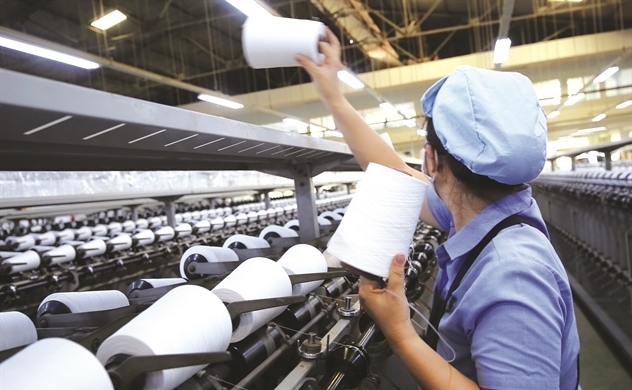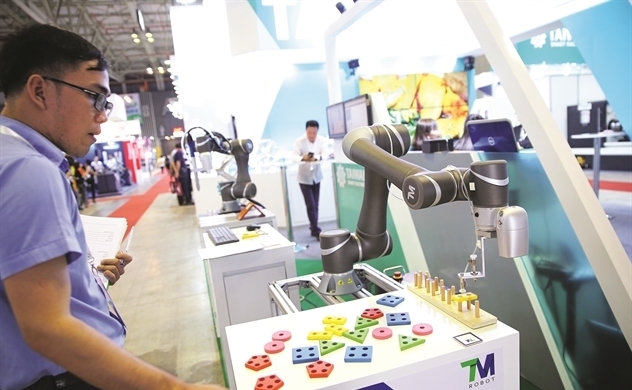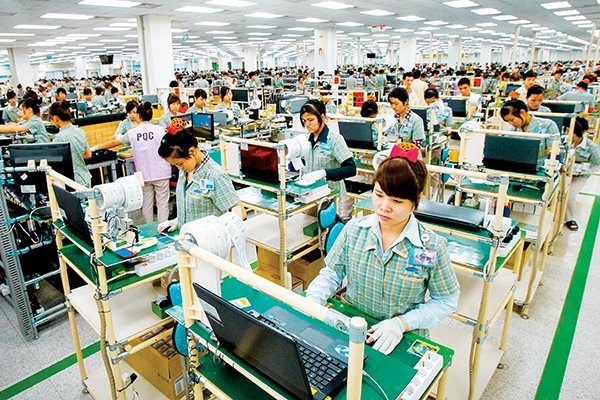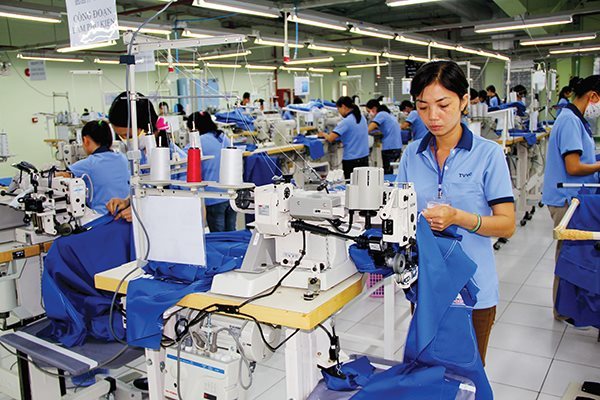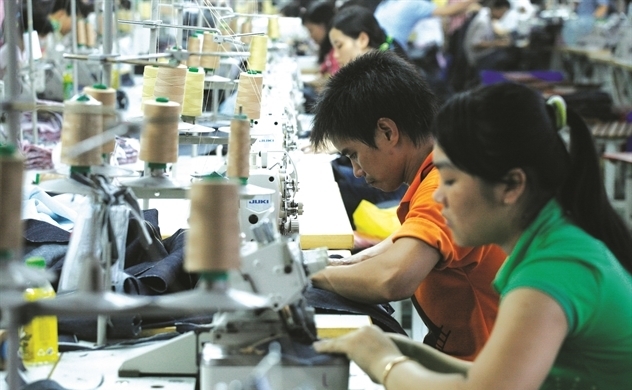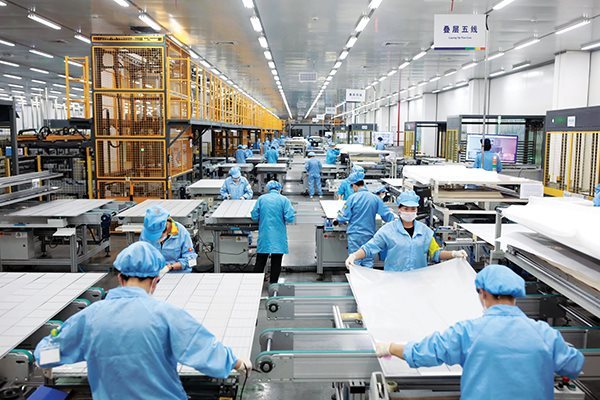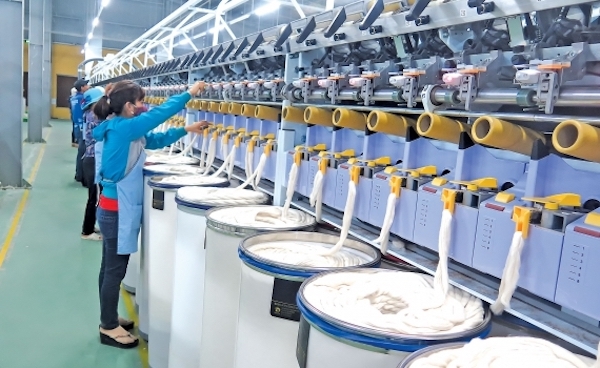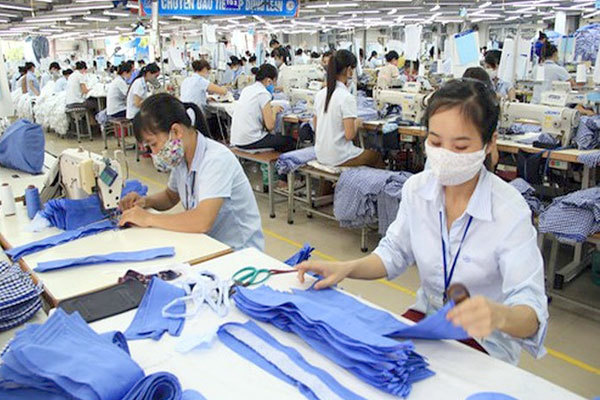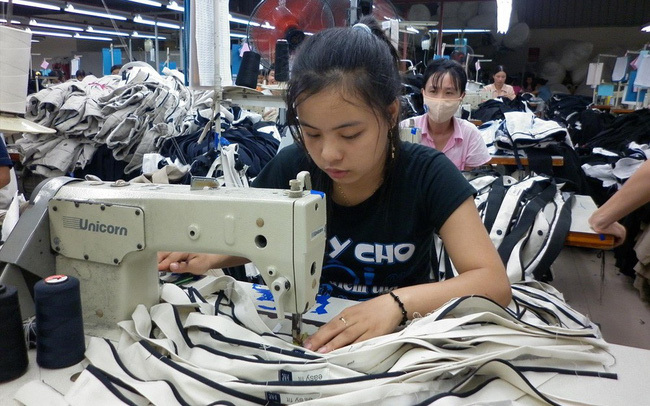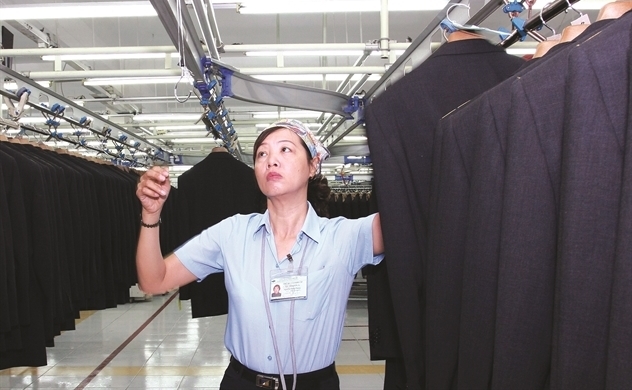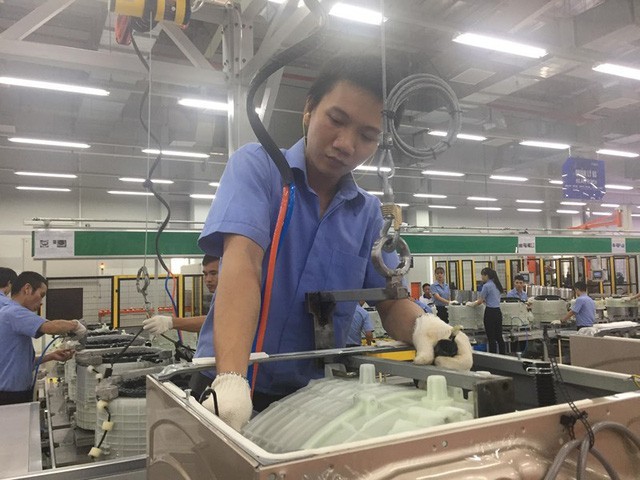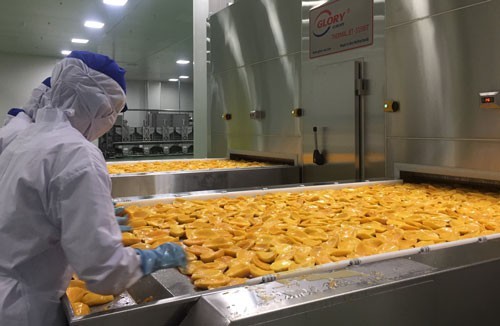- © Copyright of Vietnamnet Global.
- Tel: 024 3772 7988 Fax: (024) 37722734
- Email: [email protected]
textile and garment
Update news textile and garment
VN textile and garment industry may fail to reach $40 billion target
 The target of exporting $40 billion worth of textiles and garments this year may be unattainable.
The target of exporting $40 billion worth of textiles and garments this year may be unattainable.
4.0 era: buy more robots or employ more workers?
 Vietnam is an attractive investment destination in the 4.0 era, but it has a weak point, limited automation capability.
Vietnam is an attractive investment destination in the 4.0 era, but it has a weak point, limited automation capability.
Vietnamese textile and garment firms aggressively seeking more orders
 Thirty-eight Vietnam’s textile and garment companies recently attended ‘Global Sources Fashion and Global Sources Lifestyle’, the biggest fashion exhibition in Hong Kong, to seek buyers.
Thirty-eight Vietnam’s textile and garment companies recently attended ‘Global Sources Fashion and Global Sources Lifestyle’, the biggest fashion exhibition in Hong Kong, to seek buyers.
Great opportunities are expected for Vietnamese supporting industries
 Analysts say Vietnam’s supporting industries are seeing new opportunities as orders have increased and the capital continues to flow into Vietnam.
Analysts say Vietnam’s supporting industries are seeing new opportunities as orders have increased and the capital continues to flow into Vietnam.
Garment companies struggle to escape Cut-Make-Trim production
 It is becoming more difficult for textile and garment companies to recruit workers as
It is becoming more difficult for textile and garment companies to recruit workers as
labor costs keep increasing and workers quit to move to higher paying jobs. The only solution is changing the production method.
US importers reconsider orders of Vietnam’s garments
 Instead of getting benefits from the US-China trade war as predicted, Vietnam’s garment companies are meeting difficulties as US importers are reconsidering business with Vietnam’s exporters.
Instead of getting benefits from the US-China trade war as predicted, Vietnam’s garment companies are meeting difficulties as US importers are reconsidering business with Vietnam’s exporters.
Where will manufacturers go if US-China trade war gets worse?
 Will Vietnam be chosen as the destination for investors who plan to move out of China?
Will Vietnam be chosen as the destination for investors who plan to move out of China?
Will 85 percent of garment workers lose jobs in 4.0 industry era?
 The scenario that 85 percent of garment workers would lose jobs to robots because of the 4.0 industry revolution will not happen in Vietnam in the next 10 years, businesspeople say.
The scenario that 85 percent of garment workers would lose jobs to robots because of the 4.0 industry revolution will not happen in Vietnam in the next 10 years, businesspeople say.
VN yarn manufacturers worried about yuan depreciation
 For every one percent of the yuan depreciation against the dollar, the price of Vietnam’s yarn export to China would lose 3 US cents per kilogram, analysts estimate.
For every one percent of the yuan depreciation against the dollar, the price of Vietnam’s yarn export to China would lose 3 US cents per kilogram, analysts estimate.
EVFTA: a 'highway' with many toll collection stations
 The EU Vietnam free trade agreement (EVFTA) has been compared to a highway which allows businesses to go faster and boost their exports.
The EU Vietnam free trade agreement (EVFTA) has been compared to a highway which allows businesses to go faster and boost their exports.
Experts issue warning about the EVFTA
 The benefits brought by EVFTA, CPTPP and other free trade agreements are described as ‘tonics’ and ‘supplements’ for Vietnam.
The benefits brought by EVFTA, CPTPP and other free trade agreements are described as ‘tonics’ and ‘supplements’ for Vietnam.
In trade war, FIEs in Vietnam get biggest benefits
 In the first half of the year, foreign invested enterprises (FIEs) saw an excess of exports over imports of $15.68 billion, while the domestic economic sector witnessed a trade deficit of $15.7 billion.
In the first half of the year, foreign invested enterprises (FIEs) saw an excess of exports over imports of $15.68 billion, while the domestic economic sector witnessed a trade deficit of $15.7 billion.
VN textile & garment sector waiting for CPTPP benefits
 The textile and garment industry has orders to export $18 billion worth of products, but the opportunities brought by CPTPP have not been that great so far.
The textile and garment industry has orders to export $18 billion worth of products, but the opportunities brought by CPTPP have not been that great so far.
Garment orders don’t increase as expected
 Vietnam’s textile and garment companies are trying to find more orders to ensure continuous production from now to the end of the year.
Vietnam’s textile and garment companies are trying to find more orders to ensure continuous production from now to the end of the year.
If US imposes sanctions, some VN industries may be eliminated
 “We have discovered some Vietnamese businesses which joined hands with Chinese to help Chinese evade the US levy, " said Vu Duc Giang, chair of the Vietnam Textile and Apparel Association (Vinatas).
“We have discovered some Vietnamese businesses which joined hands with Chinese to help Chinese evade the US levy, " said Vu Duc Giang, chair of the Vietnam Textile and Apparel Association (Vinatas).
Vietnam’s textile and garment sector benefits from FTAs, trade war
 The US-China trade war and new FTAs have given a push to Vietnam’s textile and garment industry, helping it gain two-digit growth rates.
The US-China trade war and new FTAs have given a push to Vietnam’s textile and garment industry, helping it gain two-digit growth rates.
EU doors open widely to Vietnam’s farm produce
 With the EU’s strong commitment on opening its market after the EU-Vietnam FTA (EVFTA) takes effect, 94 percent of 547 tax categories of vegetable and fruits will be removed.
With the EU’s strong commitment on opening its market after the EU-Vietnam FTA (EVFTA) takes effect, 94 percent of 547 tax categories of vegetable and fruits will be removed.
Will Vietnamese products be dislodged from foreign-owned supermarkets?
 If Vietnamese products are absent from large retail chains, domestic production will lose advantages in the home market, experts warn.
If Vietnamese products are absent from large retail chains, domestic production will lose advantages in the home market, experts warn.
Vietnamese market share in US improves, but insignificantly
 The product items of labor-intensive industries that investors hope will benefit from the production relocation movement, including textile & garments, footwear and toys, still have not seen export growth breakthroughs in the US as expected.
The product items of labor-intensive industries that investors hope will benefit from the production relocation movement, including textile & garments, footwear and toys, still have not seen export growth breakthroughs in the US as expected.
Relying on Chinese materials, garment manufacturers can’t take full advantage of FTAs
 Nearly 100 percent of materials needed to make textile and garment products must be imported, limiting Vietnam’s to take full advantage of preferential tariffs in FTAs.
Nearly 100 percent of materials needed to make textile and garment products must be imported, limiting Vietnam’s to take full advantage of preferential tariffs in FTAs.
